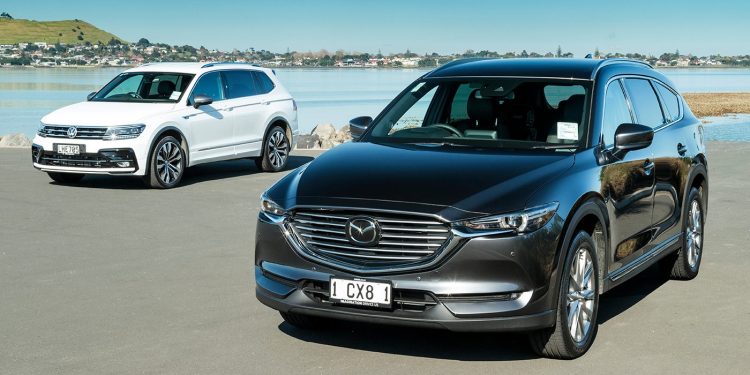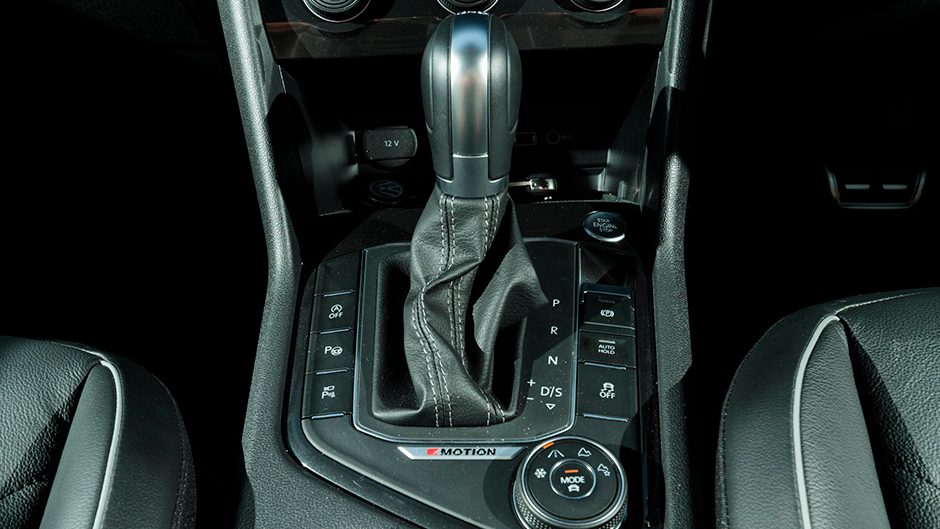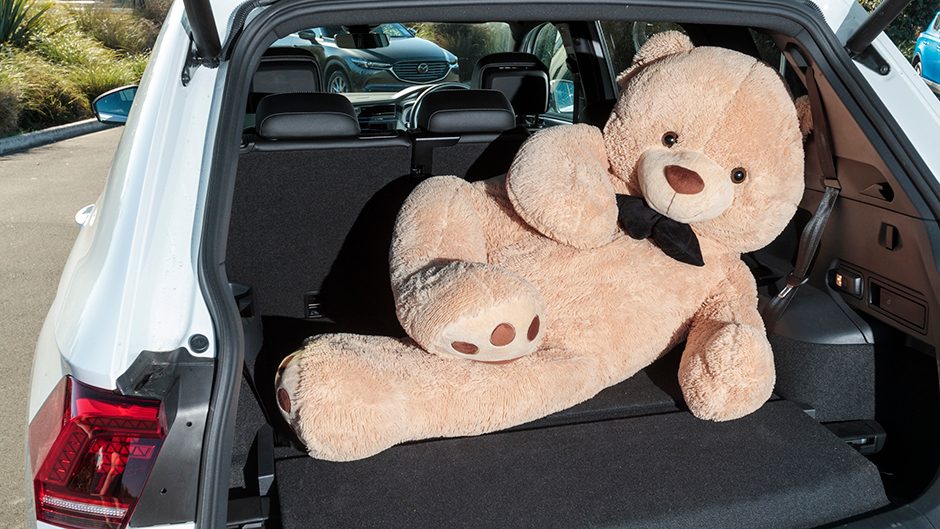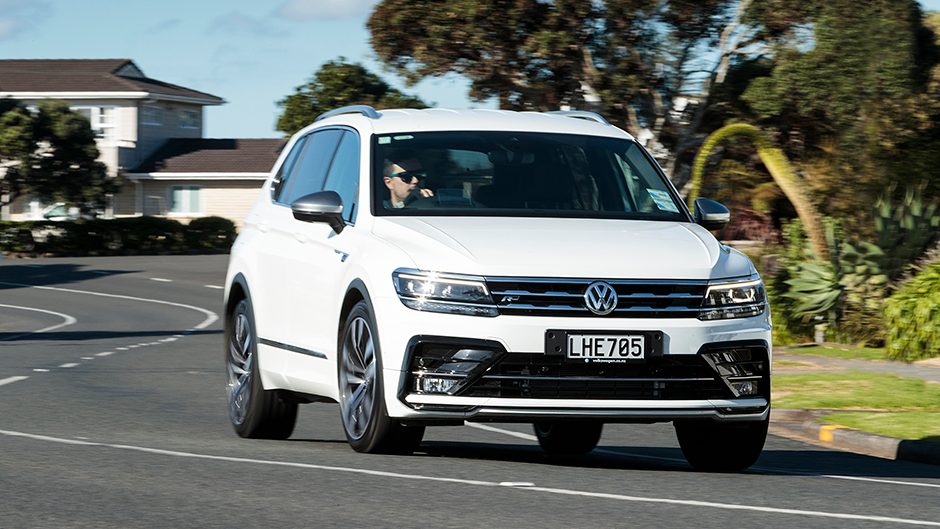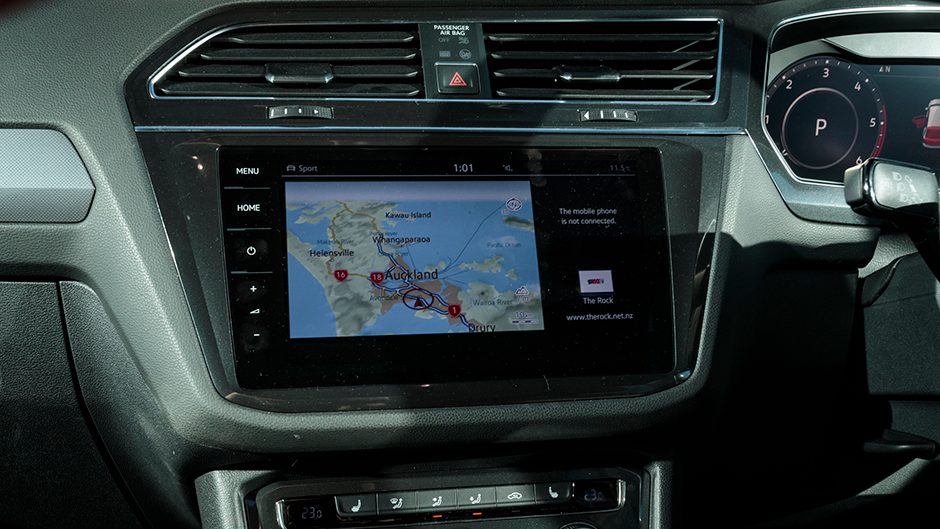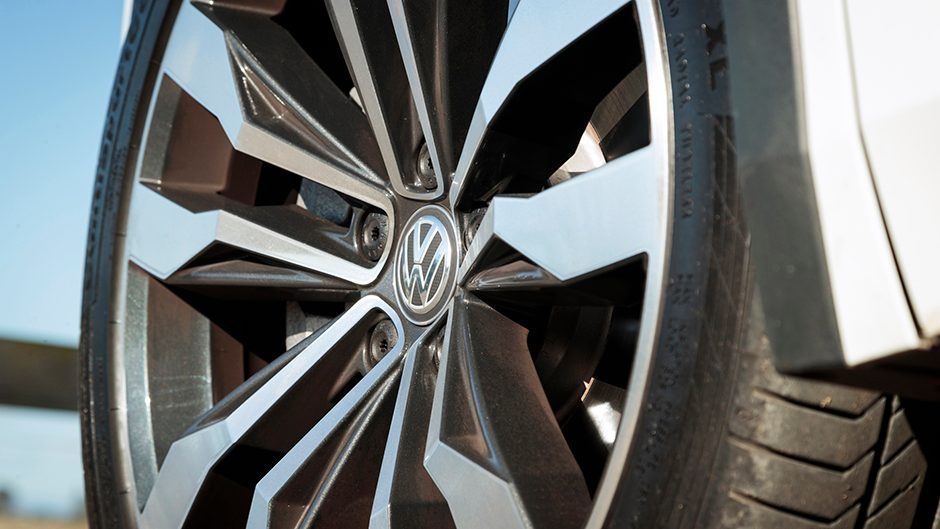2018 Mazda CX-8 Limited vs Volkswagen Tiguan Allspace R-Line comparison
Words Kyle Cassidy | Photos Tom Gasnier
Seven-seater SUVs come in a variety of sizes. Here we look at two similar offerings from Mazda and Volkswagen. But which is the better choice for ferrying the kids?
There’s no shortage of seven-seaters on the market as manufacturers scramble to plug this niche in the booming SUV market. Once the preserve of larger SUVs there are now more options offering the versatility of spare seats in the boot without quite the same hulking dimensions. The Allspace is VW’s latest SUV, a stretched Tiguan with seven seats.
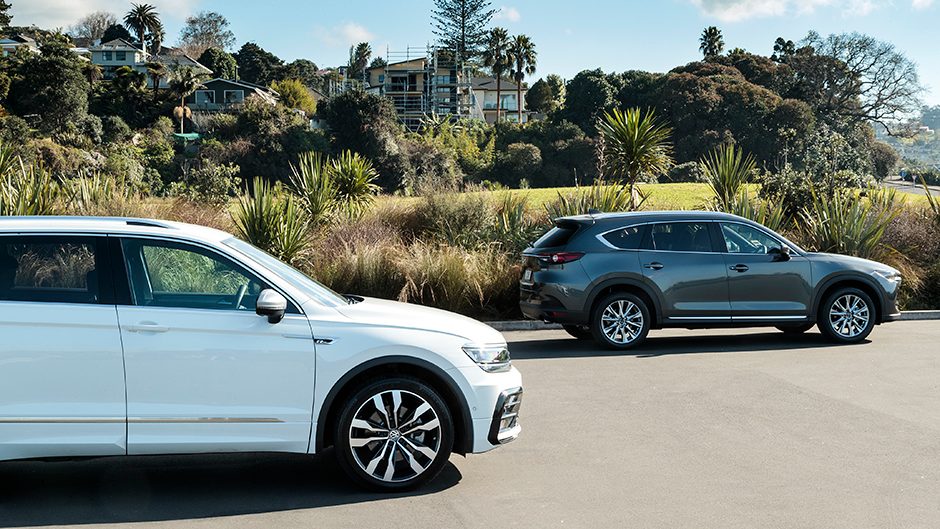
VW locally is leaving nothing to chance by offering six models over three spec levels, with prices ranging from $47,990 to $76,990 for the R-Line TDI which we have here. Mazda too has bolstered its seven-seater selection with the new CX-8, a diesel-only offering that is slightly smaller and cheaper than the CX-9. So which is the one to go for?
CX-8, like the 9 only smaller
Mazda’s CX-8 arrives as demand for these sorts is running hot. Mazda NZ reckons the CX-8 will add to its sales numbers by offering something that’s bigger than a CX-5 but slightly smaller than the CX-9. The company has axed its people movers from its global line-up and so needed something to satisfy the Japanese market where the CX-9 is deemed to be too big, hence the creation of the CX-8.
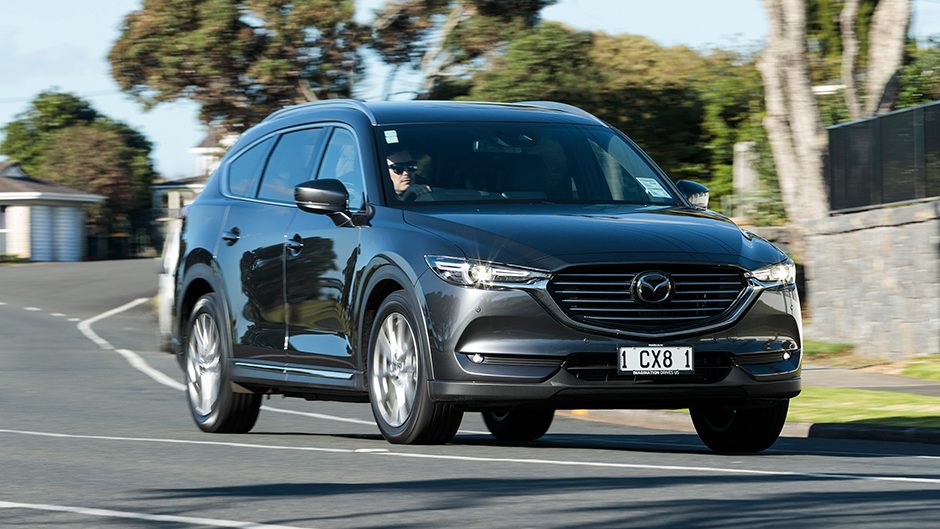
So it has three rows of seating but is not as wide (1840 vs 1969mm) or long (4900 vs 5075mm) as the 9, although it sits on the same wheelbase. Mazda NZ sees the CX-8 as a vehicle that will be used primarily as a five-seater wagon, with the third row implemented occasionally. Measured against the CX-5, it’s the same width but 350mm longer overall, with a 230mm longer wheelbase, while boot space is rated at 775L for the CX-8, 455L for the 5.
The CX-8 is powered by the updated version of the 2.2-litre twin-turbodiesel. With a more efficient combustion process and a new variable vane turbo, it creates 140kW and 450Nm, uses a six-speed auto and the AWD version is rated at 6.0L/100km. It can tow up to 2000kg.
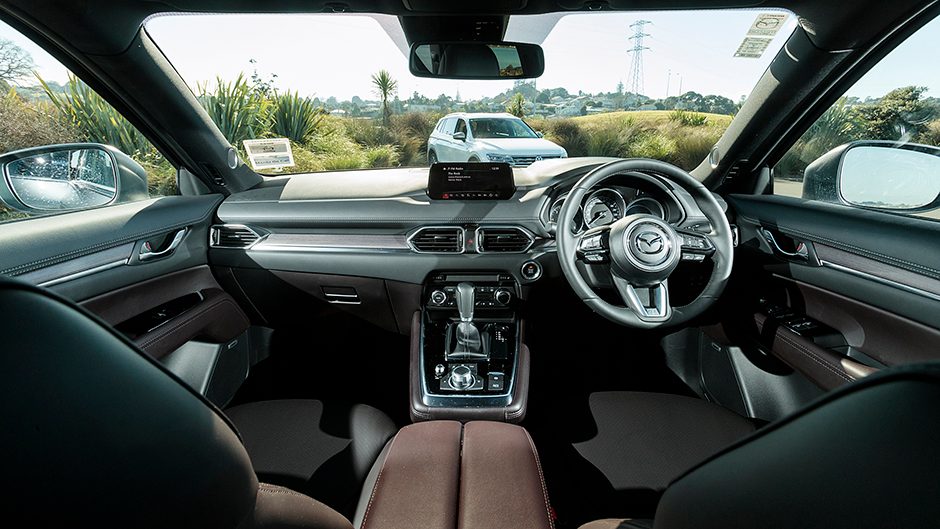
Mazda has gone all out with the specification; the GSX gets LED headlamps, a proper head-up display projected onto the screen, a smart key, reversing camera and sensors front and rear, and integrated sat nav. Mazda NZ says CarPlay and Android Auto are coming, probably in Q4. Active safety features are plentiful with AEB, blind spot warning and traffic sign recognition which also incorporates Intelligent Speed Assistance to provide further speed limit warnings. There’s also auto high beam control, lane keeping and departure warning, as well as active cruise with a stop and go feature. The 2WD GSX is $53,495, the AWD at $55,995 while the AWD Limited, featured here, is $62,495 ($2500 less than the equivalent CX-9).
The Limited adds 19s, DRLs, a powered tailgate, tints, Nappa leather trim, powered front pews, seat heaters front and rear, Bose audio, wood and chrome interior detailing, adaptive LEDs and a driver attention alert. All models come with the usual Mazda five-year, unlimited kay warranty and three years/100,000km servicing.
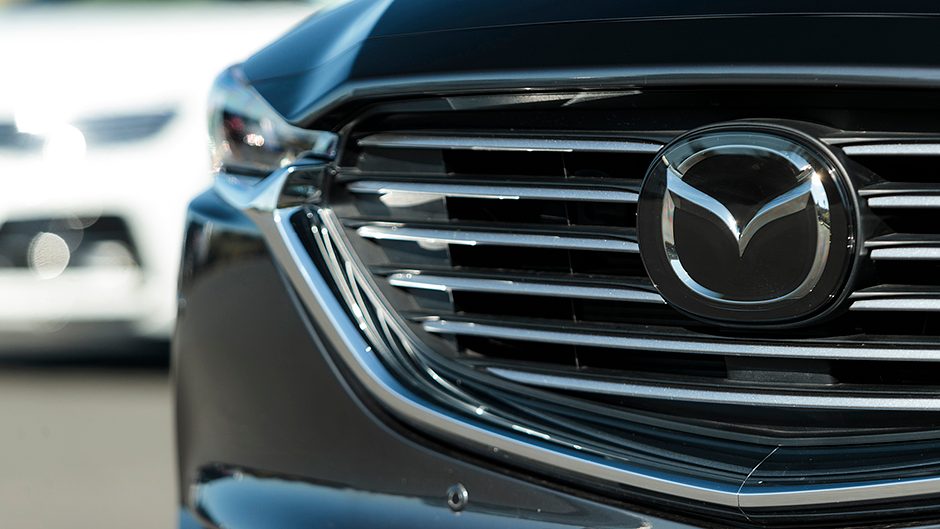
R-Line liked by Kiwis
The R-Line variants of VW’s models prove popular here, and there are two offered for the Allspace, the $72,990 162kW/350Nm petrol and the $76,990 twin-turbo diesel.
The latter is a bit of a monster with 176kW and 500Nm of torque, flowing to all wheels via a seven-speed twin-clutch. It has a 2500kg tow rating. Allspace is both longer in the wheelbase than the five-seat Tiguan and overall, but both dimensions are shorter than the CX-8’s by some 200mm. R-Line adds a sporty look with the body kit, big wheels, lowered ride height and the addition of adaptive dampers. It’s a loaded offering, matching the CX-8 on most fronts with a full suite of active safety features (bar the speed sign recognition) and a high-end interior clad in leather, with added features like ambient lighting, configurable instruments and an around-view parking camera.
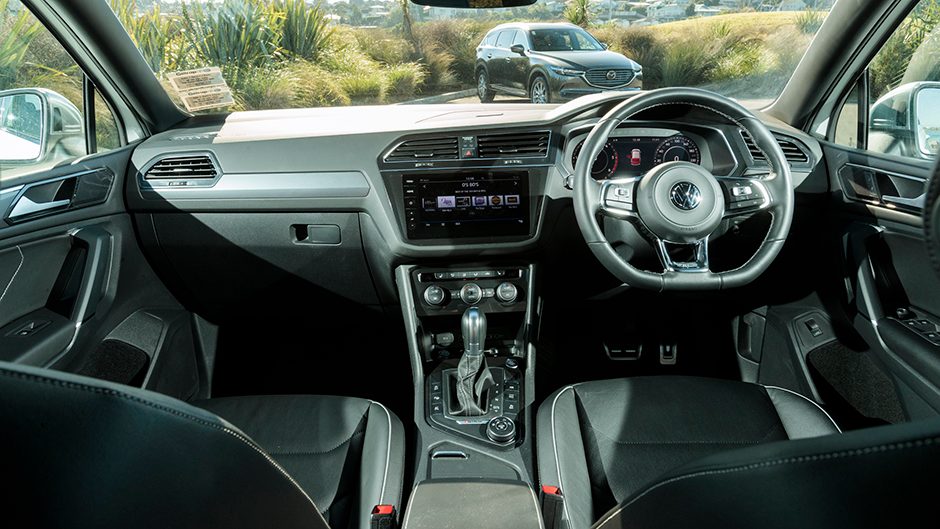
The warranty spans three years unlimited kays, while a three-year or 45,000km service plan is an additional $1200.
Same but different
You might have noticed a difference in price between these two top offerings. They are both diesel AWD seven-seaters, but take different approaches. The R-Line treads a sporty path with its look and mechanical set-up, the CX-8 a more luxurious theme with its styling and interior appointments. And yet both are decent drives in the context of the class. But whether the Tiguan is worthy of such a premium is a moot point.
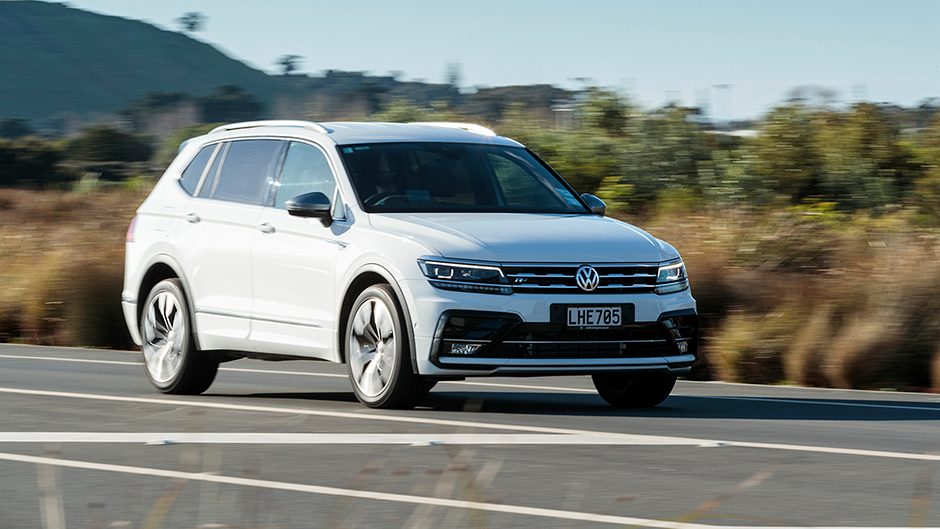
With its twin-clutch tranny and brawny diesel, the Tiguan R-Line is a rocket, hitting 100 in 6.7sec (thanks to launch control, yes, LC on a seven-seater) which puts it two second ahead of the CX-8, and it’s a handy 1.5sec quicker 80-120 as well. It’s very Germanic with its multitude of drive modes, five to choose from, as well as the off-road settings. The adaptive dampers add plushness to the ride in Comfort mode, while Sport sorts the body control in bends. Something else to fiddle with is the transmission’s S mode, and you can customise everything via the Individual setting, while messing about with the look of the digital instrument panel. The Mazda is a model of simplicity, select Drive and go.
Neither diesel messes about when getting underway with pull aplenty from 1500rpm onwards, each spinning readily for an oiler. The twin-clutch can be a little slow and slurry at intersections but it’s not long before the torque is pushing the Tiguan along smartly. And with all that easy low-end go, it’s okay that the transmission hooks into the tall gears early.
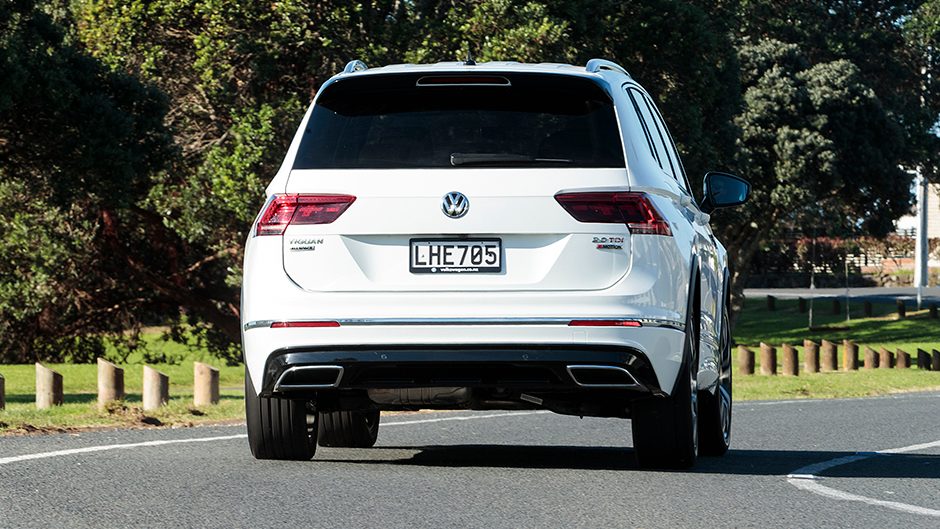
But the auto in the CX-8 is better at the everyday grind with it’s smoother and more immediate take-up (especially where the stop/start system is concerned), while the low-speed refinement of the twin-clutcher could do with some polish, especially if there’s an incline involved. With the CX-8, there’s no need to mess with modes or put the trans in Sport; it just does its job smartly. With a mix of spirited driving, motorway and commuter miles, consumption slightly favoured the Mazda, which settled in the mid-7L/100km range, where the Tiguan nudged into the eights.
When you do select Sport mode, it turns the otherwise mild-mannered Tiguan all racy. The suspenders firm to steady the roll and the driveline is full of verve, the twin-clutch whipping the diesel along smartly. The quick steering gains some heft to help negotiate bends more accurately and the sports rubber makes sure it hangs on in there. With the CX-8, there’s a few degrees more roll to tolerate, but it rides well and still manages to steer with more connection. The diesel isn’t as punchy but revs usefully to 5000rpm while the six-speed auto does just fine left to do its own thing.
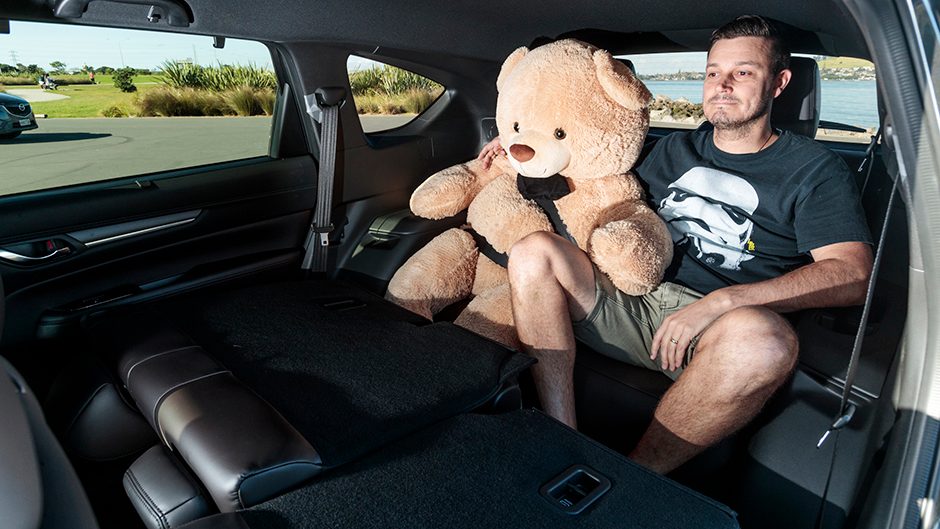
CX-8 the better conveyance
As a people carrier, the VW is what we’d call a five plus two, the CX-8 more of a genuine seven-seater. It’s bigger so has more interior space throughout. Its boot is wider but also much longer and you can flip up the third row easily, whereas in the Tiguan you need to ensure the second row has been inched forward slightly. While each provides easy access to the rearmost seats, the CX-8 offers actual leg and head room, where there’s not all that much space in the rear of the Tiguan, good for kids only in reality.
The seat comfort in the CX-8 is superior in all three rows, the rear bench featuring more room too. Its rear doors open out wider, there are bun warmers for those in the rear, a climate control panel, window shades and softly lined door tops (hard plastic in the Tiguan). The VW’s seat slides and reclines, like the CX-8’s, but legroom suffers if you have to make room for anyone in the rear. Flip-up tray tables and power sockets are nice touches.
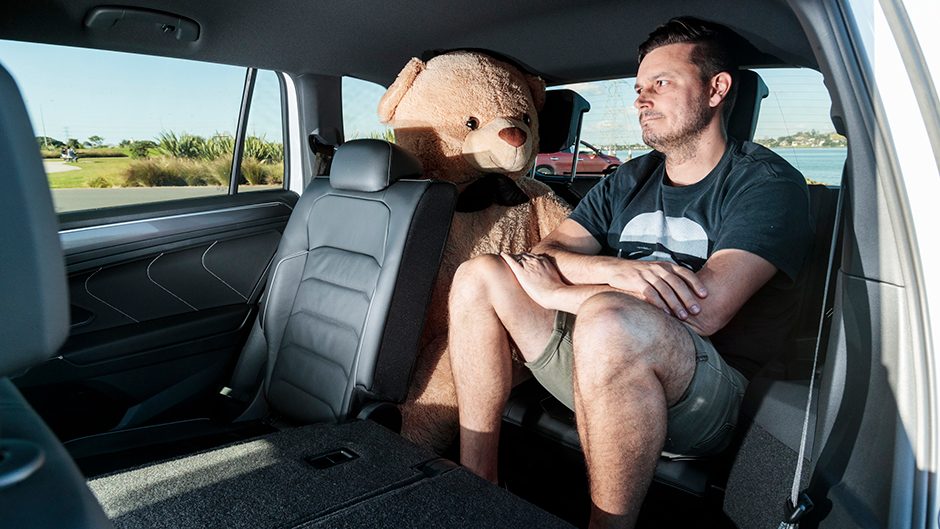
VW is usually lauded for the quality of its interiors but it’s the Mazda which exhibits the better finishing, build tolerances and materials, with fewer hard plastics and more luxuries, like the Nappa leather and a flock-lined glove box.
The driver’s seat is sumptuous compared with the VW’s, which is too hard and flat. The Tiguan wins the cup holder duel, and its infotainment system is vastly better with its bigger, brighter display, added functionality, ease of operation via touch and its smartphone connectivity.
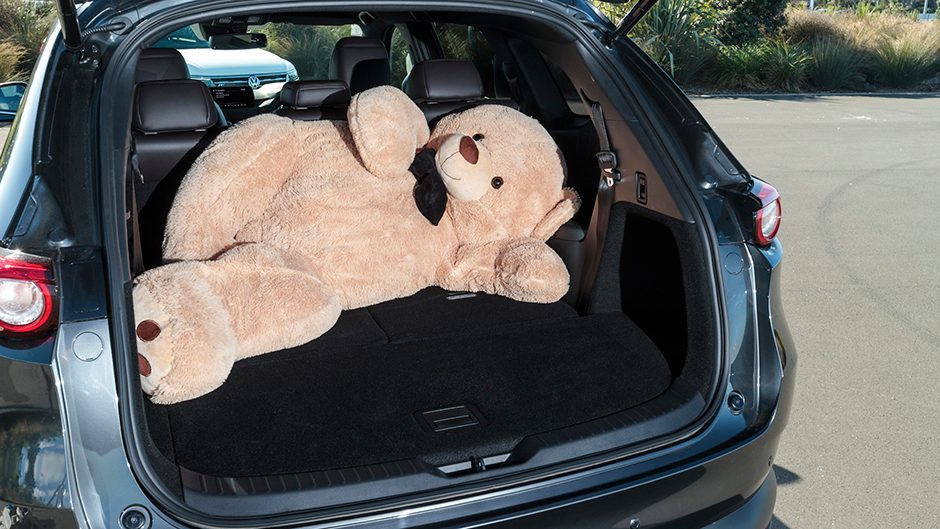
The VW has a slightly smaller turning circle while it’s variable ratio steering, with just two turns between the locks, is great for round town manoeuvres. Its smaller overall dimensions aid parking, and there’s a system to assist you with this. It also has a better camera with a surround view mode.
So the Mazda then?
The Tiguan performs better and is sportier, if that’s what you want in your seven-seater, and is more alluring in R-Line trim. But the premium seems hard to justify measured against the CX-8 which is simply better value and a better people carrier.
| Model | Mazda CX-8 Limited |
| Price | $62,495 |
| Engine | 2191cc, IL4, TDI, 140kW/450Nm |
| Drivetrain | 6-speed auto, on-demand |
| Fuel Use | 6.0L/100km |
| C02 Output | 158g/km |
| 0-100km/h | 8.71sec |
| Weight | 1893kg |
| Model | VW Tiguan Allspace R-Line |
| Price | $76,990 |
| Engine | 1968cc, IL4, TDI, 176kW/500Nm |
| Drivetrain | 7-speed twin-clutch, on-demand AWD |
| Fuel Use | 6.5L/100km |
| C02 Output | 172g/km |
| 0-100km/h | 6.70sec |
| Weight | 1904kg |


